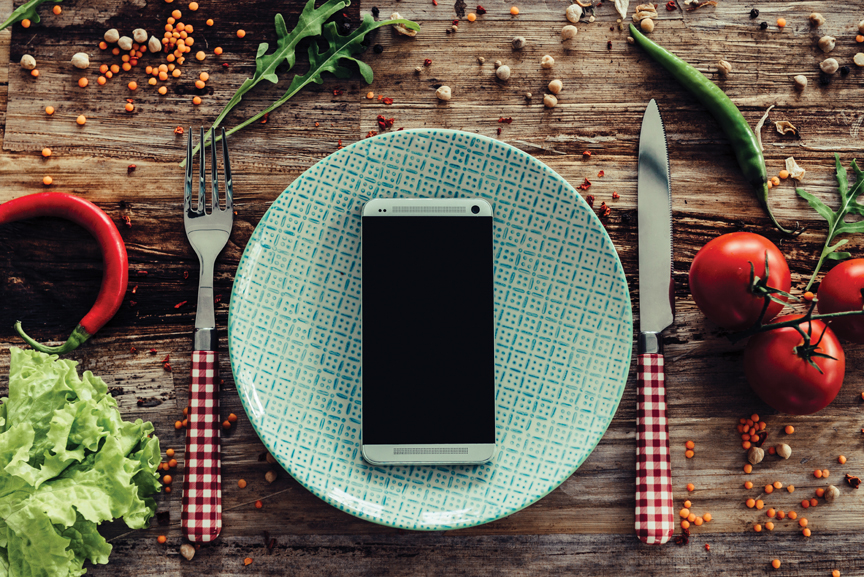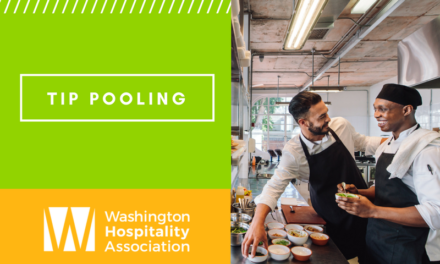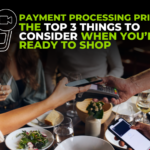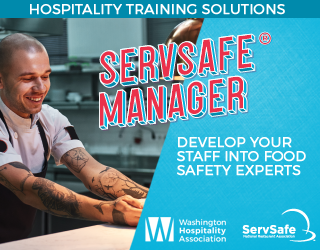By Andy Cook & Paul Schlienz
If you’re in the hospitality business, chances are that third-party delivery services are very much on your mind. And they should be.
You’ve seen the explosive growth in these services. Quick-service chains now have parking spaces reserved for third-party delivery drivers, and Uber and Amazon have jumped into the food delivery business in a big way. Other companies that focus exclusively on delivery, like Caviar, GrubHub and DoorDash, are growing by leaps and bounds.
Pentallect, a food industry strategy firm, expects the $13 billion third-party food delivery market to grow at a 13.5 percent annual rate. The market, consisting of firms delivering both restaurant meals and groceries, is projected to reach $24.5 billion by 2022. By contrast, the $1.6 trillion U.S. food industry is only growing at three percent per year.
[expander_maker id=”1″ more=”Read more” less=”Read less”]
“Delivery has become a need to have and no longer a nice to have in the restaurant industry,” said NPD’s Warren Solochek when commenting on the global information company’s Future of Foodservice Snapshot: Restaurant Delivery report. “It has become a consumer expectation.”
Convenience, Choices
So, why is third-party delivery so popular in 2018?
There are many reasons, but chief among them is its speed and convenience. And it’s the predominance of mobile phones and the subsequent rise of convenience culture that’s driving these trends.
“It’s the phenomenon of the mobile phone,” said Emily Neudorf, director of product marketing and communications at ChowNow, a company that provides an app-based ordering service for restaurants. “People are constantly on their mobile phones. You can do everything inside and outside the home from mobile, and it’s quick and convenient.”
According to a recent survey from the research firm, Mintel, approximately half of all U.S. adults ordered food delivery in the past three months. Food delivery was most popular among millennial men in urban areas, with 69 percent of them having ordered during the past three months. Fifty eight percent of women aged 18 to 34 placed orders.
“It really is all about convenience,” said AK Barnett-Hart, regional general manager with DoorDash.
Interestingly, Barnett-Hart observes that millennials are still going to restaurants despite their heavy use of takeout and delivery services. In fact, many of today’s consumers are sampling potential new eateries from the comfort of their homes.
“Delivery is not replacing the fun and excitement of going out to restaurants,” said Barnett-Hart. “Instead, it is becoming a replacement for cooking.”
Additionally, more than ever before, there is a wide variety of food choices available through delivery, including foods that appeal to health-minded consumers.
Platforms for Discovery
While third-party delivery is popular with consumers, there is much in it to appeal to restaurant operators.
“For our restaurant partners, we are providing new economic opportunities, a source for new customers as well as a means to stay in contact with existing ones,” said David Rutenberg, Western U.S. general manager for Uber Eats.
The way that third-party delivery services act as a source for new customers is through their apps, which allow customers to discover other restaurants that use the delivery service.
“Our core product, which is our website and app, enables discovery for customers to find different restaurants,” said Barnett-Hart. “We are merchandising and displaying for individual customers. If you open our app, you’ll see a list of potential restaurants that might interest you.”
Getting into the Game
If your restaurant is not already in the delivery game, it’s time to start seriously thinking about the opportunities you may be missing out on.
“Every restaurant needs to think about it,” said Barnett-Hart. “Make it a priority to investigate delivery. Meet with third party delivery companies. Try a few. Maybe two or three at the same time. Over time, you’ll figure out which service works best for you.”
Many restaurants use multiple services, and at a recent Seattle Restaurant Alliance meeting several successful restaurateurs said they use six different services. Each one comes with its own tablet, bringing a Star Trekesque quality to the back of the house.
Patrick Yearout of Ivar’s said his company ordered from several services before selecting which ones to test with customers. Their sampling included ordering for deliveries at both home and their corporate headquarters, giving them a taste of the customer experience.
Pricing for third-party delivery services is perhaps the most frustrating aspect for restaurant operators. There is a variety of models and plans, and rates and commissions generally boil down to the volume of business, customer acquisition and the ticket price.
For some services, the delivery fee to the consumer is also based on these factors. Operators may have the option of paying the delivery fee that would go to the customer. Taking on this cost can be a strategy for building your delivery business.
Other concerns for restaurateurs include the risk that food quality will suffer in the time it takes to get it from the kitchen to the customer, and that a lousy driver will hurt the reputation of their business.
There are strategies to protect against both.
First and foremost, test what happens to your menu items in the delivery process. If the bun you’re using doesn’t hold up well to 30 minutes in a to-go container, find an alternative. You also can curate your delivery menu, and that can mean leaving off items you feel will not travel well. It also gives you the opportunity to create special menu items that will not only deliver well but will also help you absorb the cost of delivery.
But at the recent Seattle Restaurant Alliance meeting, representatives from DoorDash, Caviar and ChowNow urged restaurateurs not to worry about the fries. Fries continue to be one of the most ordered foods, and customers have adjusted their expectations to a less than perfect experience with this in-demand item.
As for drivers, create accountability by time stamping the order to document when it leaves the restaurant and becomes the responsibility of the driver and the delivery service. Tamper-proof bags are becoming popular because they can secure the order. If you use these tamper-proof bags, ensure that you have a good system for making sure orders are accurate and complete.
One local company has a team member check each bag and attach a signed note before it is handed off to the driver, creating accountability on all sides.
Liabilities, Opportunities
Another thing to consider before you pursue delivery is potential liability issues. Suzanne Singer and Damien Orato, attorneys with the Florida law firm, Rumberger, Kirk & Caldwell, which works with the hospitality industry, suggest that restaurant owners can mitigate risk by:
- Having indemnity language in the contract that if liability arises, the third-party service is responsible for defending itself.
- Making sure the third-party delivery service has the resources to defend itself.
- Requiring third-party services to align with industry standards for food safety, including having procedures in place should a customer not be able to accept an order at the specified time.
- Having some sort of tracking capability is also important if chain-of-custody issues arise related to foodborne illness cases.
- Requiring proof of insurance and vehicle title to show clear vehicle ownership by the delivery service driver or company itself.
- Providing a disclaimer of any agency relationship with the restaurant.
If your restaurant is already delivering, but does not have an online ordering system, you have the option of using services that provide an app that takes mobile orders.
“We do not have a suite of couriers, but we do connect with a number of delivery services,” said ChowNow’s Neudorf. “It’s up to the restaurants if they want delivery or not.”
Whichever service you choose in the end, the potential rewards of delivery are too great to be ignored.
Things to Keep in Mind When Considering Third-Party Delivery
Onboarding the appropriate amount of services: The extra profits of delivery can be negated by higher labor costs when a restaurant has so many services that it needs to have extra human resources on hand to meet the delivery demand. Focus on efficiency and your ability to successfully, and quickly, get meals out the door.
Navigating the volume of orders: Be strategic about your delivery menu. Figure out what travels well, and what doesn’t, and consider the right number and profitability of menu options. While you can turn off some services, be careful not to overuse this option. Frequent on and offs will cause your listing to fall in ranking.
Focus on the guest: Once you do bring on a service, pay attention to the consumer’s experience and make sure you fully understand how your delivery service operates. Many providers have GPS order tracking. It’s also a good practice to order your own product as a method of “secret shopping” your delivery providers.
Working with Third-Party Delivery Services
In June, the Seattle Restaurant Alliance hosted a Q & A on how to best take advantage of the opportunities that come with third-party delivery services. Both members and representatives from several prominent third-party delivery companies shared advice. Here are some of the key takeaways from that conversation:
Menu and food quality: Work on your delivery menu to ensure better food quality. Test and consider replacements for components or menu items that don’t hold up well to delivery times.
Cost: Rates and compensation structures vary between companies and services. Volume, ticket price items and customer acquisition are key factors in negotiating and determining rates.
Variety: Many members use several services, with some reporting using six or more. Before signing up for a service, order from it to test the customer experience.
Equipment: Most services require use of tablets, and restaurants using multiple services have multiple tablets. Some services offer printer rentals or purchases. Integration with POS systems is on the horizon.
Drivers: Poor service from drivers is a large concern. Platforms can blacklist drivers, and it is important to work with your service(s) to eliminate bad drivers.
Time stamping: Restaurants can inform customers of when food is handed off to a driver by attaching a time-stamped ticket to the delivery bag.
Accuracy: One restaurant that has had success with deliveries has an employee check each delivery for accuracy and attach a hand-signed card to create accountability.
Speed: Every minute counts when it comes to a waiting driver or a waiting diner. Make speed a high priority.
Partnerships: Work with services as partners, not simply vendors, to resolve issues, improve service and build business.
[/expander_maker]



















![[Class, May 20] ServSafe Manager, Kent](https://wahospitality.org/wp-content/uploads/2018/07/CALEND1-150x150.png)







